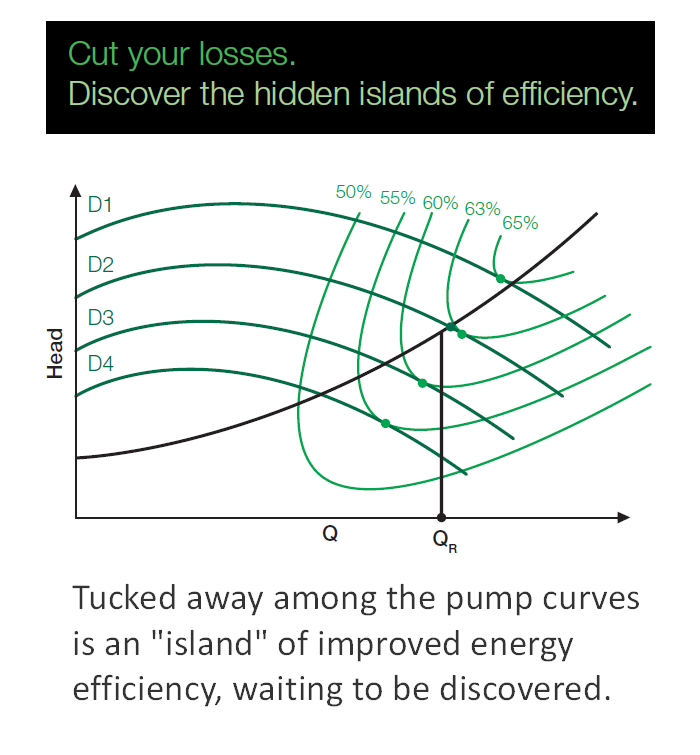Island of efficiency helps designers boost performance
Around 80 percent of maximal torque at 90 percent speed is normally considered an efficient duty point for a motor and drive system. However, a more efficient duty point can be found which could benefit a designer tasked with improving a pump system’s efficiency.
If you plot motor ISO efficiency curves for various duty points, you will discover an “island” of improved energy efficiency stretching from about 70 to 120 percent of nominal speed at 70 to 80 percent of maximum torque.
This is due to the way iron losses and copper losses in the motor combine, especially in the region above base speed, where maximum torque is reduced as the speed increases. At some point in this region, copper losses start to go up with higher current, increasing with the speed. Meanwhile, the iron losses, which are due to the magnetising current, begin to come down. The best efficiency is achieved when the reduction in iron losses is greater than the increase in copper losses. The net result is lower total losses, compared to operation with the same power output in the region below base speed.
Island of efficiency helps designers boost performance
Operating the motor at less than full torque can produce small but valuable efficiency gains in the region of 1-2 percent. This can help a designer meet the efficiency criteria required by, for instance, the Ecodesign Directive.
When tasked with the objective of improving the efficiency of a particular system, the options are often limited. Most parts of the system will have already been optimised for maximum efficiency over years of successive product generations. Selecting a different motor may be one of only a few choices available to the designer.
The key to overall efficiency is to minimise the losses through the system. Higher motor losses require more input power, increasing the losses in the variable speed drive and in the supply system. A main aim behind the Ecodesign Directive is to minimise such losses.
By looking at alternative duty points for the system and selecting a different motor, efficiency gains may be made that could well get the system over the compliance threshold.

